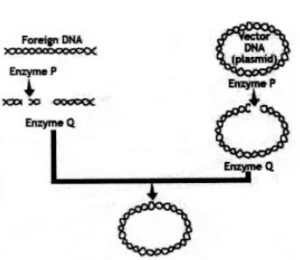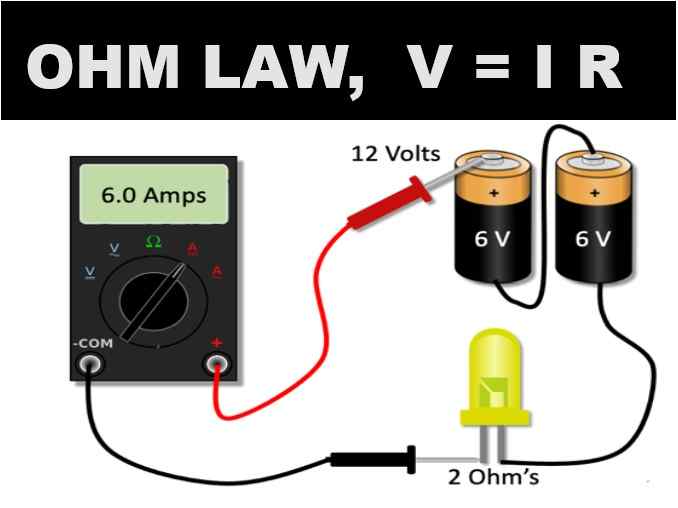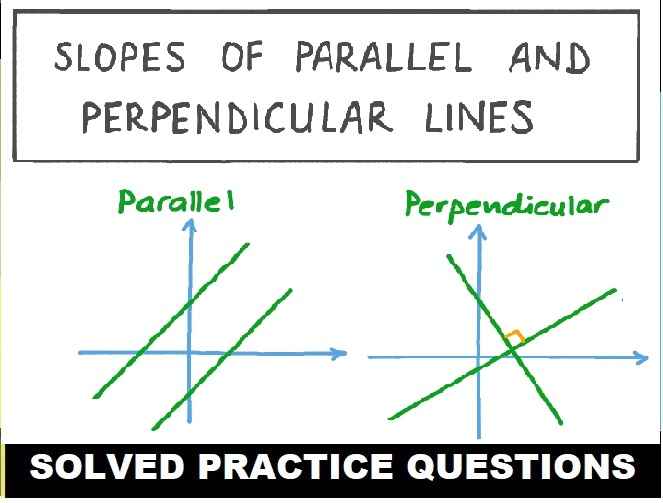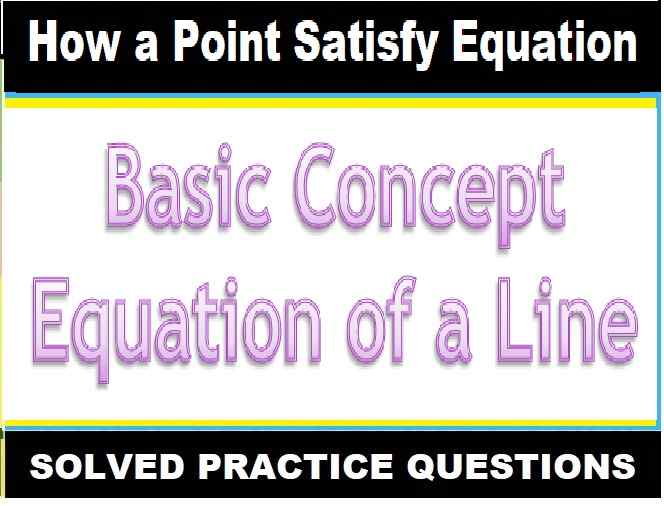MCQs Biotechnology Principles and Process for ISC Class 12 Biology. These MCQs / Objective Type Questions is based on latest reduced syllabus according 2021-22 session on bifurcated pattern. Main motto of MCQ Type Question is cracking the next upcoming Sem-2 exam of council. Visit official website CISCE for detail information about ISC Class-12 Biology.
ISC Class-12 Biology MCQs Biotechnology Principles and Process
| Board | ISC |
| Class | 12th (XII) |
| Subject | Biology |
| Chapter | Biotechnology: Principles and Process |
| Syllabus | on bifurcated syllabus (after reduction) |
| Session | 2021-22 |
| Bifurcated | Sem-2 |
| Topic | MCQs / Objective Type Question |
ISC Biology MCQs Biotechnology Principles and Process for Class 12
Question 1: Gene was synthesized in vitro by
(a) Khorana
(b) Ochoa
(c) Hollay
(d) Nirenberg
Answer : (a) Khorana
Question 2: Rising of dough is due to
(a) Production of CO2
(b) Emulsification
(c) Hydrolysis of wheat flour starch into sugars
(d) Multiplication of yeast
Answer : (a) Production of CO2
Question 3: Two microbes found to be very useful in genetic, engineering are:
(a) Escherichiya Coli and Agrobacterium tumefaciens
(b) Virbio chloerae and tailed bacteriophage
(c) Diplococcus sp and pseudomonas sp.
(d) None of these
Answer : (a) Escherichiya Coli and Agrobacterium tumefaciens
Question 4: Plasmid is a:
(a) Fungus
(b) Plasmid
(c) Part of Plasma membrane
(d) Extra chromosomal DNA in bacterial cell
Answer : (d) Extra chromosomal DNA in bacterial cell
Question 5: In genetic engineering, antibiotics are used
(a) as selectable markers
(b) to select healthy vectors
(c) to keep the cultures free of infection
(d) as sequences from where replication starts
Answer : (a) as selectable markers
Question 6: Plasmid has been used as vector because
(a) both its ends show replication.
(b) it can move between prokaryotic and eukaryotic cells.
(c) it is circular DNA which have capacity to join to eukaryotic DNA.
(d) it has antibiotic resistance gene.
Answer : (c) it is circular DNA which have capacity to join to eukaryotic DNA.
Question 7: Which of the following is a plasmid?
(a) pBR 322
(b) Bam H I
(c) Sal I
(d) Eco RI
Answer : (a) pBR 322
Question 8: Which of the following enzyme is used in the case of fungus to cause a release of DNA along with other macromolecules ?
(a) Lysozyme
(b) Cellulase
(c) Chitinase
(d) Amylase
Answer : (c) Chitinase
Question 9: Which of the following is a natural genetic engineer of plants?
(a) Yeast
(b) Agrobacterium tumefaciens
(c) E. coli
(d) Mycoplasma
Answer : (b) Agrobacterium tumefaciens
Question 10: Which of the following should be chosen for best yield if one were to produce a recombinant protein in large amounts?
(a) A continuous culture system
(b) Any of the above
(c) A stirred-tank bioreactor without in-lets and out-lets
(d) Laboratory flask of the largest capacity
Answer : (a) A continuous culture system
Question 11: Who among the following was awarded the Nobel Prize for the\ development of PCR technique?
(a) Kary Mullis
(b) Arthur Kornberg
(c) Hargovind Khurana
(d) Herbert Boyer
Answer : (a) Kary Mullis
Question 12: Which is obtained from genetic engineering
(a) Golden Rice
(b) Haemoglobin
(c) Glucose
(d) None of these
Answer : (a) Golden Rice
Question 13: The expression of a transgene in the target tissue is identified by a
(a) Reporter
(b) Enhancer
(c) Promoter
(d) Transgene
Answer : (a) Reporter
Question 14: What is cDNA?
(a) Circular DNA
(b) Cloned DNA
(c) DNA produced from reverse transcription of RNA
(d) Cytoplasmic DNA
Answer : (c) DNA produced from reverse transcription of RNA
Question 15: Recombinant DNA is obtained by cleaving the pro-DNA by
(a) primase
(b) exonucleases
(c) ligase
(d) restriction endonuclease
Answer : (d) restriction endonuclease
Question 16: Brief exposure of cells to an electric field also allow the bacteria to take up DNA and this process is called as_______.
(a) Apheresis
(b) Electroporation
(c) Electrolysis
(d) Electrophoresis
Answer : (b) Electroporation
Question 17: The enzyme used for joining two DNA fragments is called
(a) ligase
(b) restriction endonuclease
(c) DNA polymerase
(d) gyrase
Answer : (a) ligase
Question 18: Which one is called molecular scissors?
(a) Endocrine
(b) Ribonuclease
(c) Restriction enzymes
(d) Exonuclease
Answer : (c) Restriction enzymes
Question 19: The extraction of DNA from the agrose gel is called as______.
(a) Elution
(b) Ligation
(c) Transformation
(d) Isolation
Answer : (a) Elution
Question 20: An antibiotic resistance gene in a vector usually helps in the selection of:
(a) Competent cells
(b) Transformed cells
(c) Recombinant cells
(d) None of the above.
Answer : (b) Transformed cells
Question 21: For transformation, micro-particles coated with DNA to be bombarded with gene gun are made up of:
(a) Silver or Platinum
(b) Platinum or Zinc
(c) Silicon or Platinum
(d) Gold or Tungsten
Answer : (d) Gold or Tungsten
Question 22: Important objective of biotechnology in agriculture section is
(a) To produce pest resistant varieties of plants
(b) To increase the nitrogen content
(c) To decrease the seed number
(d) To increase the plant weight
Answer : (a) To produce pest resistant varieties of plants
Question 23: The two vitamins manufactured biotechnologically are
(a) Vitamin B12 and Vitamin B6
(b) Vitamin B12 and Vitamin B2
(c) Vitamin B6 and Vitamin B2
(d) Vitamin B12 and Vitamin B9
Answer : (b) Vitamin B12 and Vitamin B2
Question 24: The EcoR-1 enzyme is obtained from
(a) Virus
(b) Salmonella
(c) E.Coli
(d) Penicillium
Answer : (c) E.Coli
Question 25: Proteins can be digested by
(a) Protease
(b) Pectinase
(c) Chitinase
(d) Nuclease
Answer : (a) Protease
Question 26: The process of separation and purification of expressed protein before marketing is called
(a) upstream processing
(b) downstream processing
(c) bioprocessing
(d) postproduction processing
Answer : (b) downstream processing
Question 27: DNA or RNA segment tagged with radio- active molecule is called:
(a) Vector
(b) Probe
(c) Clone
(d) Plasmid
Answer : (b) Probe
Question 28: Which of the following restriction enzymes produces blunt ends?
(a) Sal I
(b) Eco RV
(c) Xho
(d) Hind III
Answer : (b) Eco RV
Question 29: Restriction endonuclease – Hind II always cuts DNA molecules at a particular point by recognizing a specific sequence of
(a) six base pairs.
(b) five base pairs.
(c) four base pairs.
(d) seven base pairs.
Answer : (a) six base pairs.
Question 30: While isolating DNA from bacteria, which of the following enzymes is not used?
(a) Lyozyme
(b) Ribonuclease
(c) Deoxyribonuclease
(d) Protease.
Answer : (c) Deoxyribonuclease
Question 31: Which of the following has popularised the PCR (polymerase chain reactions)?
(a) Easy availability of DNA template
(b) Availability of synthetic primers
(c) Availability of cheap deoxyribonucleotides
(d) Availability of ‘Thermostable’ DNA polymerase.
Answer : (d) Availability of ‘Thermostable’ DNA polymerase.
Question 32: Which one of the following is used as a vector for cloning genes into higher organisms?
(a) Baculovirus
(b) Salmonella typhimurium
(c) Rhizopus nigricans
(d) Retrovirus
Answer : (d) Retrovirus
Question 33: A bacterial cell was transformed with recombinant DNA that was generated using a human gene. However, the transformed cells did not produce the desired protein. Reasons could be
(a) Human gene may have intron which bacteria cannot process
(b) Amino acid codons for humans and bacteria are different
(c) Human protein is formed but degraded by bacteria
(d) All of the above
Answer : (a) Human gene may have intron which bacteria cannot process
Question 34: Restriction endonucleases are most widely used in recombinant DNA technology. They are obtained from :
(a) Plasmids
(b) AH prokaryotic cells
(c) Bacteriophages
(d) Bacterial cells
Answer : (d) Bacterial cells
Question 35: Biolistics (gene-gun) is suitable for
(a) Transformation of plant cells
(b) Constructing recombinant DNA by joining with vectors
(c) DNA finger printing
(d) Disarming pathogen vectors
Answer : (a) Transformation of plant cells
Question 36: In agarose gel electrophoresis, DNA molecules are separated on the basis of their:
(a) Charge only
(b) Charge to size ratio
(c) both a and b
(d) Size only
Answer : (d) Size only
Question 37: Significance of ‘heat shock’ method in bacterial transformation is to facilitate:
(a) Binding of DNA to the cell wall
(b) Uptake of DNA through membrane transport proteins
(c) Uptake of DNA through transisent pores in the bacterial cell wall and plasma membrane
(d) Expression of antibiotic resistance gene.
Answer : (c) Uptake of DNA through transisent pores in the bacterial cell wall and plasma membrane
Question 38: Name the enzymes ‘P’ and ‘Q’ that are involved in the processes given below.

(a) Enzyme P-Exonuclease and Enzyme Q-Permease
(b) Enzyme P-Exonuclease and Enzyme Q-Ligase
(c) Enzyme P-Endonuclease and Enzyme Q-Permease
(d) Enzyme P-Restriction endonuclease and Enzyme Q-Ligase
Answer : (d) Enzyme P-Restriction endonuclease and Enzyme Q-Ligase
Question 39: Which of the following is known as specific molecular scissors?
(a) Ligase
(b) Helicase
(c) Restriction endonuclease
(d) DNA polymerase
Answer : (c) Restriction endonuclease
Question 40: Helium is used in Biolistic gun as______.
(a) It is a light gas
(b) It acts as a propellant
(c) It is an inert gas
(d) Tungsten coated with DNA can be easily passed in the presence of Helium
Answer : (b) It acts as a propellant
Question 41: The first restriction endonuclease reported was
(a) Hind II
(b) EcoRI
(c) Hind III
(d) BamHI
Answer : (a) Hind II
Question 42: Restriction enzymes belong to a larger class of enzymes, which is called as
(a) ligases
(b) kinases
(c) nucleases
(d) polymerases
Answer : (c) nucleases
Question 43: Triticale, the first man-made cereal crop, has been obtained by crossing wheat with:
(a) Rye
(b) Pearl millet
(c) Sugarcane
(d) Barley
Answer : (a) Rye
Question 44: There is a restriction endonuclease called EcoRI. What does .co part in it stand for ?
(a) Colon
(b) Coelom
(c) Coenzyme
(d) coli
Answer : (d) coli
Question 45: DNA fragments generated by the restriction endonucleases in a chemical reaction can be separated by
(a) polymerase chain reaction
(b) electrophoresis
(c) restriction mapping
(d) centrifugation
Answer : (d) centrifugation
Question 46: Agarose extracted from sea weeds is used in
(a) spectrophotometry
(b) tissue culture
(c) PCR
(d) gel electrophoresis
Answer : (d) gel electrophoresis
Question 47: Some pathogenic bacteria develop resistance to antibiotics by
(a) Modifying their cell walls
(b) Developing such enzymes which modify antibiotics
(c) Alter the antibiotics target due to spontaneous mutation
(d) All the above.
Answer : (d) All the above.
Question 48: What was the world’s first ever mammal to be successfully cloned from an adult cell?
(a) Sheep
(b) Monkey
(c) Cow
(d) Calf
Answer : (a) Sheep
Question 49: Which of the following organelles is associated with genetic , engineering?
(a) Plasmids
(b) Plastids
(c) Chloroplast
(d) Mitochondria
Answer : (a) Plasmids
Question 50: The first artificial plant hybrid was made around 1717 by
(a) Thomas Fair child
(b) De Vries
(c) Borlaug
(d) None of these
Answer : (a) Thomas Fair child
–: End of MCQs Biotechnology Principles and Process :–
-: also visit :-
- ISC Sem-2 Question Bank Class-12
- Sem-2 ISC Specimen Paper for Class-12
- ISC Class-12 Textbook Solutions ,Syllabus, Solved Paper
- Previous Year Question Paper for ISC Class-12
Please share with your ISC friends if it is helpful
Thanks


